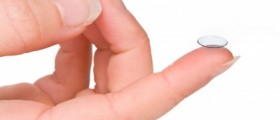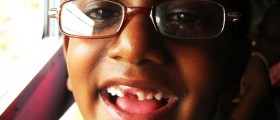What is Radial Keratotomy?
Radial keratotomy (RK) is a surgical treatment for nearsightedness or myopia. The procedure is performed by making radial cuts in the cornea which, upon healing, flatten the cornea, resulting in better vision. In a patient with both nearsightedness and astigmatism, the surgeon first makes incisions to flatten the misshapen part of the cornea and once they heal, the radial incisions are made.Radial keratotomy is an outpatient procedure, done under local anesthesia. It is performed to correct mild to moderate nearsightedness. Typically, only one eye is operated at the time and while it heals the other eye is corrected with contact lenses.

- Of 427 patients (793 eyes that underwent radial keratotomy), 374 patients (88%) (693 eyes) returned for the 10-year examination.
- Of 675 eyes with refractive data, 38% had a refractive error within 0.50 D and 60% within 1.00 D. For 310 first-operated eyes, the mean refractive error was -0.36 D at 6 months and changed in a hyperopic direction to + 0.51 D at 10 years.
- The average rate of change was +0.21 D/y between 6 months and 2 years and +0.06 D/y between 2 and 10 years. Between 6 months and 10 years, the refractive error of 43% of eyes changed in the hyperopic direction by 1.00 D or more.
- The hyperopic shift was statistically associated with the diameter of the clear zone. Uncorrected visual acuity was 20/20 or better in 53% of 681 eyes and 20/40 or better in 85%.
- Loss of spectacle-corrected visual acuity of 2 lines or more on a Snellen chart occurred in 3% of all 793 eyes that underwent surgery.
- Among 310 patients with bilateral radial keratotomy, 70% reported not wearing spectacles or contact lenses for distance vision at 10 years.
Who can Undergo Radial Keratotomy?
Not all nearsighted people are suitable candidates for radial keratotomy. The procedure is generally not done on children and teenagers, pregnant or breast feeding women and patients suffering from conditions that may hamper the healing, such as lupus, rheumatoid arthritis or uncontrolled diabetes. Finally, radial keratotomy is not a treatment option for people with severe myopia or rare condition called keratoconus marked by abnormality of the cornea.
Complications of Radial Keratotomy
Radial keratotomy was introduced by a Russian surgeon Dr. Fyedorov who performed thousands of the procedures in the 70’s and 80’s. RK was brought into the United States in 1978 by Dr Norman Stahl and Dr Jerry Zelman. Short term effects of radial keratotomy performed at that time were positive. However, most of the patients who were then operated now suffer from long term complications.
Initially, for several days after the procedure, the patient may experience postoperative problems such as pain and blurred vision. The patient is advised to avoid driving and vigorous sports for few weeks. However, radial keratotomy can cause many long term complications some of which are very severe.
Long Term Complications of Radial Keratotomy
The most common long term complication of radial keratotomy is overcorrection of the vision resulting in farsightedness. Also, the patient may still remain nearsighted after the procedure, which is known as under-correction.
Irregular astigmatism marked by double vision or ghost images may also result out of radial keratotomy.
Glare may last for several months after the surgery. It causes the patient to see halos or starburst around lights. This can cause difficulties driving at night. Sometimes, this problem may become permanent.
In rare cases, radial keratotomy can cause puncture or rupture of the cornea. Infection of the cornea may occur postoperatively or several years after the procedure. Difficulty in fitting contact lenses is a common complication of radial keratotomy due to changed shape of the eye after the procedure.

















Your thoughts on this
Loading...